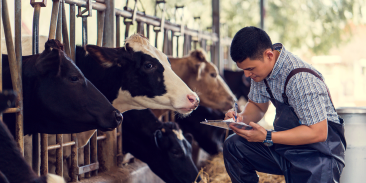We can't control the weather, but we can give farmers and ranchers tools to adapt
The weather is having an unprecedented impact on farmers, ranchers and forest owners. California, the biggest agriculture producer in the country and the state which provides half of domestic fruits and vegetables, is currently experiencing its worst drought on record. Farmers in California are expected to idle 500,000 acres of croplands this year. Across the country fire season is 60 days longer than it was 30 years ago. Climate change and extreme weather events are costing our agriculture sector and surrounding economies billions of dollars, and the science says it's only going to get worse.
That's why the U.S. Department of Agriculture just announced the formation of new regional "Climate Hubs" to address the impact of extreme weather and climate change on agriculture and forestry.
As a part of President Obama's Climate Action Plan announced last June, these Hubs will be a clearinghouse of information and provide science-based knowledge and practical tools to agriculture stakeholders. These seven regional hubs, and three sub-hubs, will look at region-specific agriculture risks and ways to adapt, shift and mitigate the increasing effects of a climate change. They will help farmers, ranchers, and forest owners adapt to a new climate brought on by climate change.
In order to help land owners and managers innovate and remain productive and competitive, these Hubs will share information on new technologies, tools, and farming practices, including developments pioneered by EDF such as:
- Fertilizer optimization to improve how nutrients are managed to meet both production and environmental goals
- Application of compost to rangeland which increases carbon sequestration, water retention and forage quality
- Avoided conversion of grasslands to preserve vital carbon sinks as well as habitat for a host of wildlife
- Methane reductions from rice farming which not only reduce methane generation, but reduce water use as well
EDF, a participant in the Northern Plains Hub located in Colorado, will work with the USDA, other federal and state agencies, and other partners to make these Hubs a great resource for farmers and ranchers to best adapt to the threat of climate change.
Science has found that heat waves, such as the one that affected Texas in 2011, have become more likely than they were 40 years ago. These new Hubs will help farmers address drought (which cost over $50 billion from 2011-2013), flooding, heat waves, and pests. They will help to focus the wealth of information that exists on resilient and sustainable agriculture practices in a changing climate and enable coordination with local land managers.
As Secretary Vilsack noted yesterday, "If we are not proactive, as the President has directed, we will find ourselves 5, 10, 15, 20 years down the road wishing we had done what we're doing today."











